Implant implantation is a surgical procedure, which must follow strict aseptic surgical conditions and surgical rules. In order to obtain the best planting effect, soft and hard tissues must be carefully treated. When the bone density is high, in order to ensure the implant can be implanted smoothly (the torsion is 30 Ncm), tapping drill can be used in the preparation of implant bed. Excessive temperature can affect or interrupt the bone healing of implants, and heat generation should be minimized.
The recommended drilling speed is:
· 2.0 mm < 800 rpm, 3.1 mm < 600 rpm, 4.25 mm < 500 rpm
· Holes should be drilled intermittently and not under excessive pressure.
· Keep the drill sharp
· Use cool, disinfected NaCl solution or saline solution to provide adequate external cooling of the device
When the implant bed is prepared, the bone mineral density level (D1 to D4) of the patient can be gradually perceived by the operator. Correct application of neck drill can ensure the implant placement and reduce the pressure on the neck of the implant. In the case of very high bone mineral density, the use of arch wire drill can be considered. In principle, the torsion should not exceed 40 Ncm when implants are implanted.
In order to determine the optimal implant length and prevent nerve injury, adequate bone mass should be checked beforehand. After the implant bed is ready, it is recommended that the cervical margin of the implant should usually be placed in a position parallel to the alveolar ridge. Ratchet wrenches or hand-operated
medical torque wrenches of different lengths or planters are required for implantation. When planting machine is used, its speed should not exceed 25 revolutions per minute. Do not touch the rough surface of the implant at any time to prevent contamination. The maximum torsion should not exceed 40 N cm during implantation. In order to ensure the direction of implant implantation, the guide rod can be used for observation.
Before suturing the wound, the implant must be covered with a sealing screw. In the healing of perforated gingiva, appropriate healing base should be selected.
When the implant has passed the bone healing period (mandibular for at least 2 months and maxillary for 3 months), the implant is exposed with a mucosal circumcision knife with sufficient gingival attachment. There is a small hole in the center of the closed screw to guide the cutting direction of the ring drill conveniently. If incremental bone technology is used, the healing period should be prolonged. After removing the sealing screw, the implant body is cleaned and a healing base which meets the gingival height is installed. When soft tissue heals completely and there is no local inflammation, the final repair treatment can be carried out for 8-10 days.
Next is the production of impressions and technicians room components, all completed, you can wear into the patient's mouth. The abutment is tightened to the implant under the circumstance of limited torsion (20Ncm). The prosthesis can be connected to the base by bonding or retaining screw (center screw or horizontal screw). The removable denture is connected to the implant through the repair component.

 +86-021-50327060
+86-021-50327060
 zq@lzqtech.com
zq@lzqtech.com
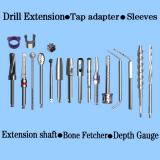 Medical Instrument
We can achieve perfect edge quality and dimensional tolerance up to±0.0005mm (±0.5μm) in the process of micro, ultra-long, ultra-thin, super-abrasive, impact-resistant, high-precision and combined ... VIEW MORE
Medical Instrument
We can achieve perfect edge quality and dimensional tolerance up to±0.0005mm (±0.5μm) in the process of micro, ultra-long, ultra-thin, super-abrasive, impact-resistant, high-precision and combined ... VIEW MORE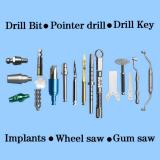 Implant
Corresponding and matching drills and tools of different types, forms, shapes, structures can be high precisely ground to mold according to different brands and different types of implants forms, shap... VIEW MORE
Implant
Corresponding and matching drills and tools of different types, forms, shapes, structures can be high precisely ground to mold according to different brands and different types of implants forms, shap... VIEW MORE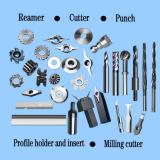 Cutting Tools
Super-hardness machining for special, non-standard new ite ms with different size and tolerance. VIEW MORE
Cutting Tools
Super-hardness machining for special, non-standard new ite ms with different size and tolerance. VIEW MORE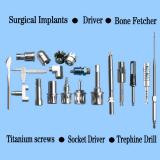 Accessory Parts
we can customize for you according to your samples or drawings for any manufacturing of ceramic,carbide,stainless high-speed steel, stainless steel, titanium alloy, titanium diamond, etc series, hig... VIEW MORE
Accessory Parts
we can customize for you according to your samples or drawings for any manufacturing of ceramic,carbide,stainless high-speed steel, stainless steel, titanium alloy, titanium diamond, etc series, hig... VIEW MORE

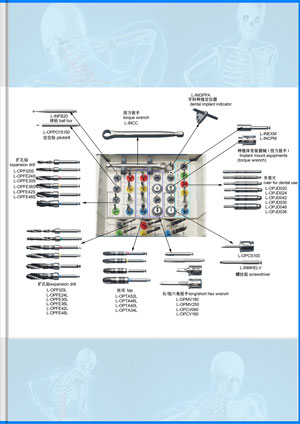
 +86-021-50327060
+86-021-50327060 
 NO.1269 Plant, Jinhu Road, Jinqiao Export Processing Zone, Pudong New District, Shanghai, China.
NO.1269 Plant, Jinhu Road, Jinqiao Export Processing Zone, Pudong New District, Shanghai, China. 
